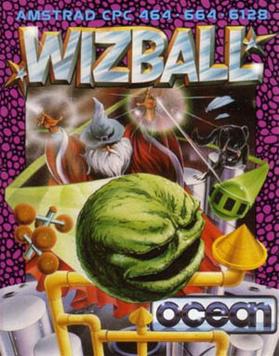
Wizball is a horizontally scrolling shooter written by Jon Hare and Chris Yates and released in 1987 for the Commodore 64 and later in the year for the ZX Spectrum and Amstrad CPC. Versions for the Amiga and Atari ST were released in the following year. Wizball was also ported to IBM PC compatibles and the Thomson MO5.
Thalamus Ltd was a British computer game developer that published titles for a number of 8-bit and 16-bit platforms during the late 1980s and early 1990s.

Stunt Car Racer is a racing video game developed by Geoff Crammond. It was published in 1989 by MicroProse, under their MicroStyle and MicroPlay labels in the United Kingdom and in the United States, respectively. The game pits two racers on an elevated track on which they race in a head-to-head competition, with ramps they must correctly drive off as the main obstacle.

Flimbo's Quest is a 2D platform game published by British publishing house System 3 for the Commodore 64, Amiga, Atari ST and Amstrad CPC. A ZX Spectrum version was produced but never released. The game itself was developed by Laurens van der Donk in the Netherlands who was involved in the demoscene being in both Boys Without Brains (BWB) and Hotline.
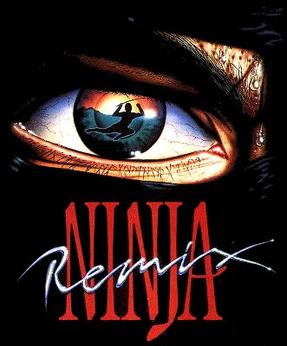
Last Ninja is a series of video games published by System 3. The first game in the series titled The Last Ninja, was released in 1987 for the Commodore 64 and was one of the most successful games for the system. In 1988, System 3 released Last Ninja 2, and in 1991 the third game in the series, Last Ninja 3. In 1990, Last Ninja Remix was released for 8-bit systems. This was Last Ninja 2 with new music, a new introductory sequence, slightly changed graphics and fixed bugs. Confusingly, the 16-bit versions of the original The Last Ninja game were also released in 1990 as Ninja Remix.
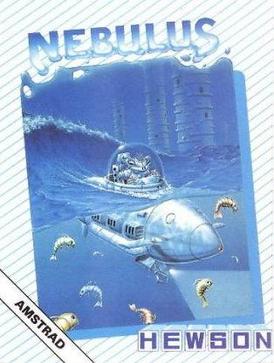
Nebulus is a platform game created by John M. Phillips and published by Hewson Consultants in the late 1980s for home computer systems. International releases and ports were known by various other names: Castelian, Kyorochan Land, Subline, and Tower Toppler.

Rick Dangerous 2 is a platform game developed by Core Design for the Amiga, Atari ST, Amstrad CPC, ZX Spectrum, Commodore 64, and MS-DOS. It was released in 1990 and published by Micro Style as a sequel to Rick Dangerous.

Exolon is a run and gun game programmed by Raffaele Cecco and published by Hewson in 1987 for the ZX Spectrum, Commodore 64, and Amstrad CPC. It was later converted to the Enterprise 128, Amiga, and Atari ST.

Knightmare is a video game released by Activision in 1987 for ZX Spectrum, Amstrad CPC, Commodore 64, and Atari ST. It was written by Mev Dinc, J.P. Dean, E.M. Dean and Nick Cooke, and is based on the Anglia Television show Knightmare. Four years later, Mindscape released entirely different game based on the show, also called Knightmare, for the Atari ST and Amiga.

Druid is a hack and slash dungeon crawl developed by Electralyte Software and published by Firebird in 1986 for the Atari 8-bit family and Commodore 64. It was also ported to Amstrad CPC, ZX Spectrum, and by Nippon Dexter in 1988 for the MSX, although the MSX port was released in Japan only. Another Japanese port of Druid entitled Druid: Kyōfu no Tobira (ドルイド 恐怖の扉) was made for the Famicom Disk System by Jaleco in 1988. The game was followed by Druid II: Enlightenment and Warlock: The Avenger.
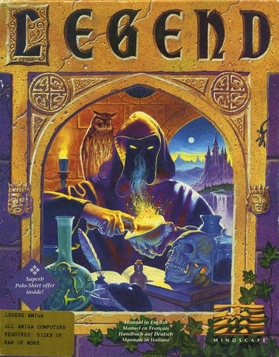
Legend, also known as The Four Crystals of Trazere in the United States, is an isometric fantasy role-playing game released in 1992 for the Amiga, Atari ST, and DOS. It was developed by Pete James and Anthony Taglione for the then UK-based Mindscape, and published by The Software Toolworks. In the game, the player controls four adventurers on a quest to save the land of Trazere from an ancient, re-awakening evil. In 1993, Mindscape released a sequel, Worlds of Legend: Son of the Empire. The copyrights for both "Legend" and "Worlds of Legend" are currently owned by Ubisoft, who bought them from Mattel Interactive with the rest of the Mindscape library in 2001.
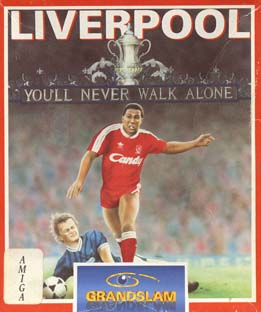
Liverpool is an association football video game released in 1990 for the Amstrad CPC. In 1992, versions were released for the Atari ST, Amiga and MS-DOS platforms. A Commodore 64 port was released in 1993. The game was developed by Arc Developments and published by Grandslam Entertainment. Liverpool is based on the Liverpool F.C. football team. One or two players can play Liverpool.

Barbarian II: The Dungeon of Drax is a video game first published in 1988 for various home computers. It was released as Axe of Rage in North America. The game is the sequel to Barbarian: The Ultimate Warrior, which was published in 1987. In Barbarian II, the player controls a princess or barbarian character, exploring the game world to locate and defeat an evil wizard. The game's plot is an extension of its predecessor, although the gameplay is different. While the first game offers two players the opportunity for virtual head-to-head combat, the second is a single-player beat 'em up with fewer fighting moves. It uses a flip-screen style instead of scrolling.

Storm Warrior is a 1989 beat 'em up video game developed and released by Elite Systems for the Amstrad CPC and Commodore 64 8-bit home computer systems. The game casts the player in the role of a prince on a quest to rid his kingdom of a witch's curse. It is unrelated to the 1984 game Storm Warrior.

The Real Ghostbusters is a 1987 shoot 'em up arcade game developed and published by Data East. It is loosely based on Ghostbusters. In Japan, Data East released it as a non-Ghostbusters arcade game under the title Meikyuu Hunter G. In 1989, Activision published The Real Ghostbusters for Amiga, Amstrad CPC, Atari ST, Commodore 64, and ZX Spectrum.

Mickey Mouse: The Computer Game, also known as just Mickey Mouse, is an action game developed and published by Gremlin Graphics in 1988 for the Amiga, Amstrad CPC, Atari ST, Commodore 64, and ZX Spectrum.

Terminator 2: Judgment Day is a 1991 action video game developed by Dementia and published by Ocean Software. It is based on the 1991 film of the same name, and was released in Europe for Amiga, Amstrad CPC, Atari ST, Commodore 64, DOS, and ZX Spectrum. It is a sequel to The Terminator, itself based on the 1984 film of the same name. The game features several gameplay styles such as driving, fighting, and puzzle-solving.

Judge Dredd is a 1991 platform shoot 'em up video game based on the character of the same name. It was developed by Random Access and published by Virgin Mastertronic. It was released in Europe in 1991, for the Amiga, Atari ST, Commodore 64, and ZX Spectrum. Critics found the gameplay repetitive.
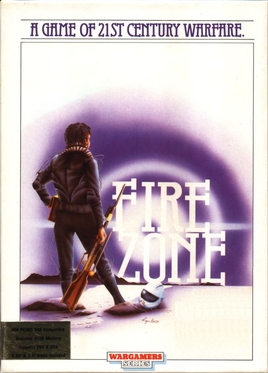
Firezone is a 1988 computer wargame developed by Arcadia and published by Personal Software Services (PSS) for the Amstrad CPC. It is part of PSS' Wargamers series. Ports for Commodore 64, Amiga, Atari ST, and MS-DOS were released later.
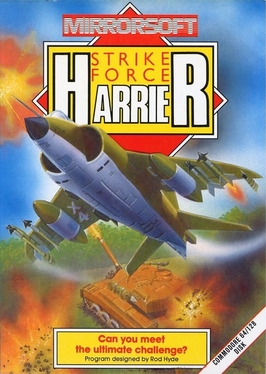
Strike Force Harrier is a 1986 combat flight simulation video game designed by Rod Hyde and published by Mirrorsoft for the 8-bit home computers. 16-bit ports were released later.




















